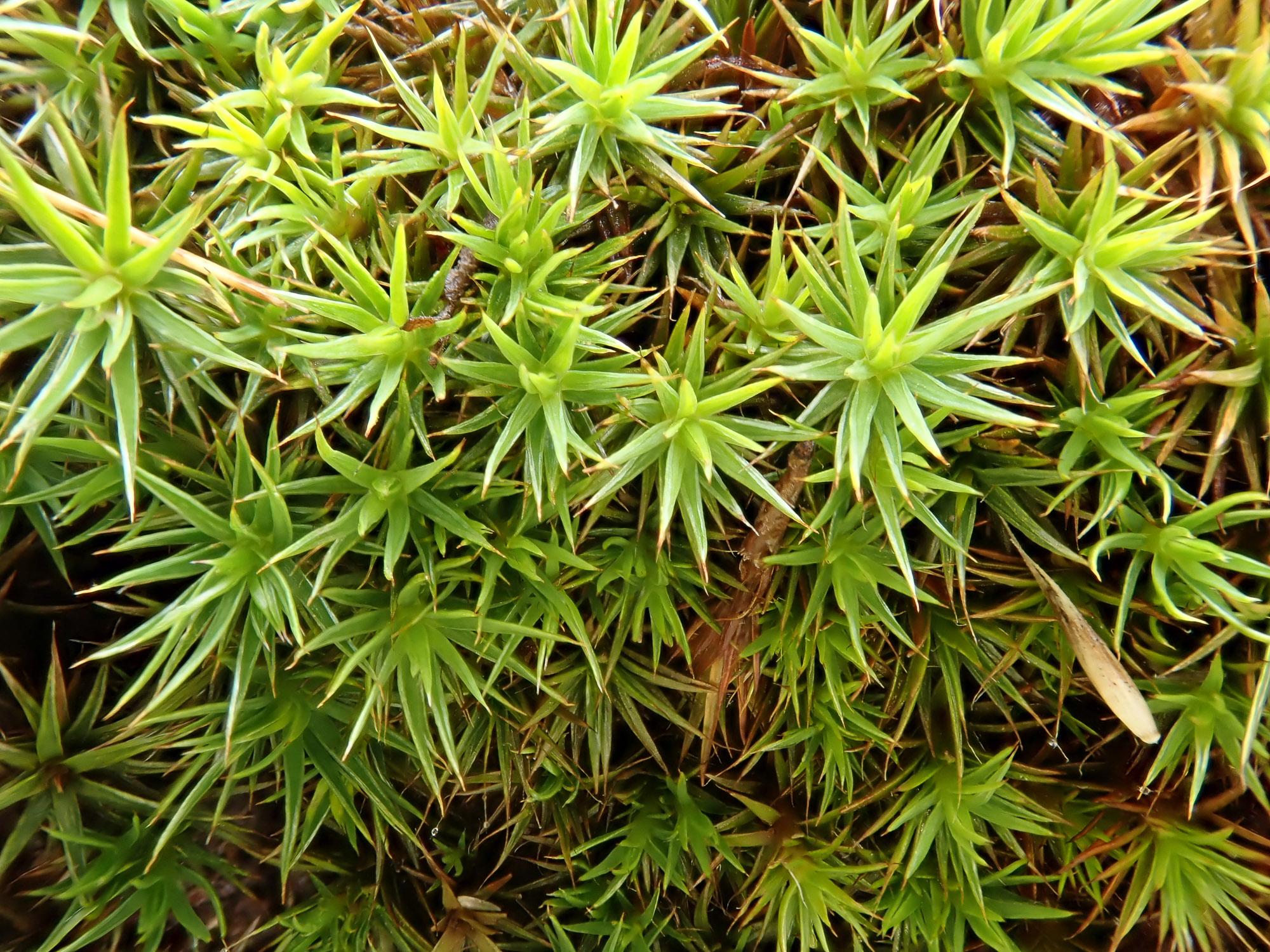
OS0149636_1638904850.jpg from: https://bryophyteportal.org/portal/taxa/index.php?taxon=160452&clid=204
Introduction
Polytrichum juniperinum var. integrum Müll.Hal., commonly known as juniper haircap moss, is a fascinating species of moss in the Polytrichaceae family. This hardy and widespread moss plays important ecological roles and has some unique adaptations. In this blog post, we’ll take a closer look at this intriguing little plant.
Background
Mosses are small, non-vascular plants in the division Bryophyta. Unlike other plants, they lack true roots, stems, and leaves. Instead they have leaf-like structures called phyllids. Mosses reproduce by spores rather than seeds and are found in moist environments worldwide.
Polytrichum is a genus of mosses known for their relatively large size and complex structure compared to other mosses. There are around

2020-10-08-11-00-18.jpg from: https://www.britishbryologicalsociety.org.uk/learning/species-finder/polytrichum-juniperinum/
100 Polytrichum species found across the globe. Polytrichum juniperinum var. integrum is one variety of the species Polytrichum juniperinum.
Morphology and Identification

Polytrichum-juniperinum-4.jpg from: https://ohiomosslichen.org/moss-polytrichum-juniperinum/
Polytrichum juniperinum var. integrum forms dense clumps or mats. The individual plants can grow 4-10 cm tall. The phyllids are lance-shaped, 4-8 mm long, with toothed margins near the tip. When dry, the phyllids become tightly appressed to the stem, giving the plants a distinctive neat appearance.
The spore capsules are borne on long reddish setae (stalks) and are

jim__stasz_18901428509_8131706504_c.jpg from: https://www.marylandbiodiversity.com/view/10937
cubic to cylindric

polytrichum-juniperinum-close-up-polytrichum-juniperinum-moss-close-up-189687260.jpg from: https://www.dreamstime.com/polytrichum-juniperinum-close-up-polytrichum-juniperinum-moss-close-up-image189687260
in shape, with a hairy calyptra

607317_b2ab1374.jpg from: https://www.plantarium.ru/page/image/id/607317.html

1460691658_c63c22a6ce_b.jpg from: https://www.flickr.com/photos/maximillian_millipede/1460691658/
(cap) covering the tip. Spores are released from the capsules to reproduce.
Global Distribution and Habitat
Polytrichum juniperinum var. integrum has a wide global distribution, found in North America, Europe, Asia, Africa, Australia, and New Zealand. It grows in a variety of habitats including coniferous forests, heathlands, tundra, and disturbed sites like roadsides or trails. This moss prefers acidic, nutrient-poor, well-drained soils and sunny to partially shaded conditions.
Ecological Roles and Adaptations
As a pioneer species, Polytrichum juniperinum var. integrum plays an important role in soil stabilization and nutrient cycling in early successional habitats. Its dense mats help prevent erosion

715168_d9ed78b7.jpg from: https://www.plantarium.ru/page/image/id/715168.html
and retain moisture in the soil. Over time, the moss adds organic matter to the soil as old parts of the plants decompose.

3385309865_1140b5eda3_b.jpg from: https://www.flickr.com/photos/kenpiccs/3385309865
This moss has several adaptations to survive harsh conditions:

juniper-leaved-juniper-haircap-polytrichum-juniperinum-male-plants-with-archegonia-exmoor-n-p-somerset-england-united-kingdom-europe-2PFK4W5.jpg from: https://www.alamy.com/juniper-leaved-juniper-haircap-polytrichum-juniperinum-male-plants-with-archegonia-exmoor-n-p-somerset-england-united-kingdom-europe-image543162177.html
- Thick cell walls prevent desiccation
- Waxy cuticle on phyllids reduces water loss
- Rhizoids anchor the plants and absorb water and nutrients
- Rudimentary vascular tissue transports water more efficiently than other mosses
Conclusion
From the tundra to the forest floor, Polytrichum juniperinum var. integrum is a tenacious moss with a wide-ranging distribution. Its unique adaptations allow it to thrive in challenging environments and play a vital role in pioneering new habitats. Next time you’re out for a hike, keep an eye out for this fuzzy little eco-engineer! Can you spot its cubic capsules reaching for the sky?